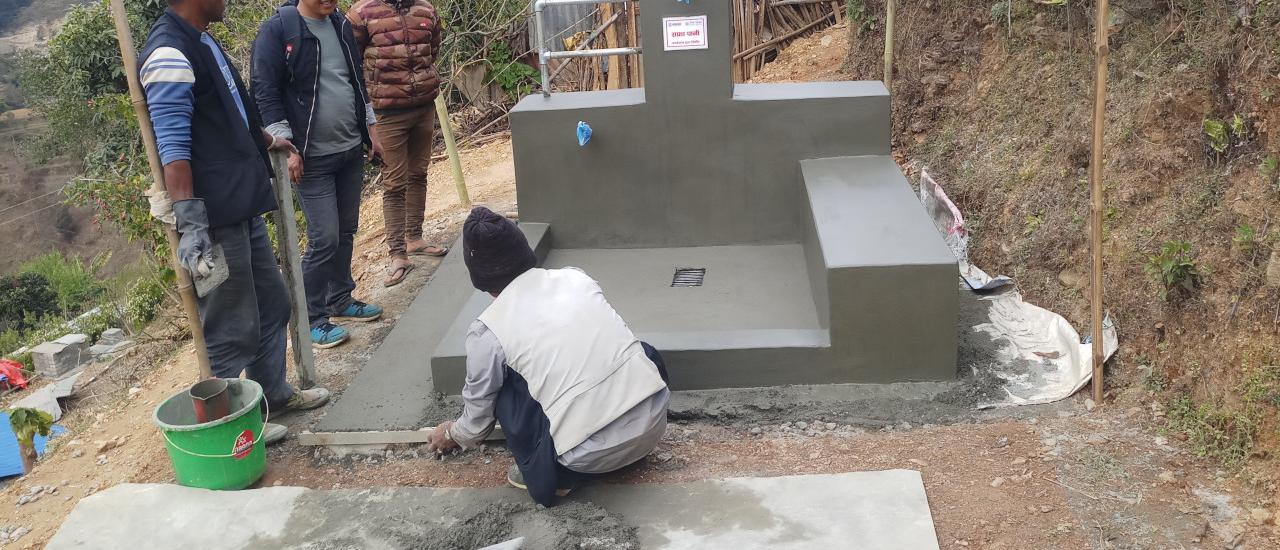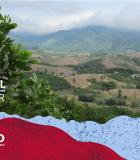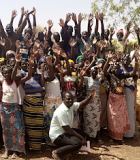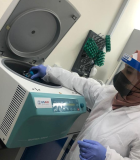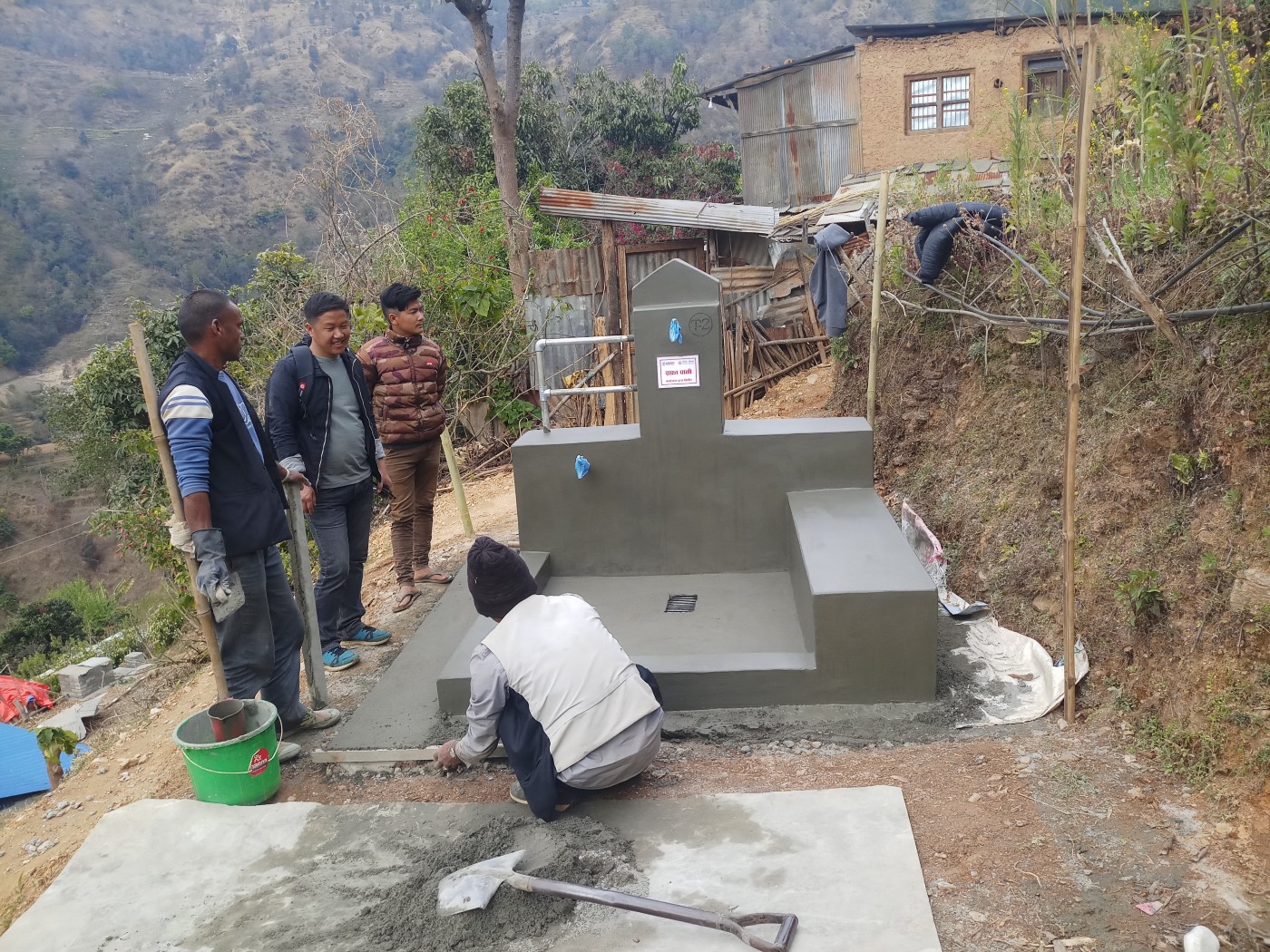
Photo credit: USAID/Nepal
Dharapani Village in Sindhupalchowk District is one of hundreds of communities devastated by the April 2015 earthquake in Nepal, which killed nearly 9,000 people and impacted hundreds of thousands more. The earthquake destroyed all 53 homes in the village and ruined crucial water and sanitation infrastructure, resulting in months of water scarcity.
Phurten Sherpa, a 53-year-old man from Dharapani, had hoped to build an earthquake-resistant house in the immediate aftermath of the disaster to replace his demolished home. Like most rural Nepalis, he planned to use locally available materials to do so, such as mud bricks or stone. But in order to bind these materials into a durable home, he would need large amounts of water — something that Dharapani severely lacked at the time. The village barely even had a dedicated drinking water supply, let alone any extra water to use for agriculture or housing reconstruction.
“The Government of Nepal provided grants to rebuild our houses,” Sherpa recalls. “But we still lacked water to aid with the construction. Buying water and bringing it up all the way to our village was costly as well as unmanageable.”
The water problem persisted in our village and ruled out our dream of building a new house any time soon.
“It was a tough time,” he adds. “We traveled half an hour and waited for an hour to fetch a bucket of water from a pond…. Even this 30-minute journey was painful for me because I have a bad back. The water problem persisted in our village and ruled out our dream of building a new house any time soon.”
A Restored Water Supply Brings New Hope
In December 2015, less than eight months after the earthquake, USAID launched the Safaa Paani (“Clean Water”) program to help disaster-stricken communities like Dharapani restore access to safe water. To date, the program has improved water access and public health outcomes for more than 45,000 of the most vulnerable and earthquake-impacted Nepalis, increasing their self-reliance while assisting them on the long road to recovery. This included Sherpa and his neighbors who were able to complete the construction of their new, earthquake-safe homes thanks to an accessible water source.
To maximize the program’s effectiveness, upon launching, USAID used geographic information system technology to map water sources and determine where its assistance was most urgently needed. “We prioritized at-risk populations and people who are underserved, especially those located in difficult geographic locations,” says Pragya Shrestha, environmental health specialist at USAID/Nepal.
With this knowledge in hand, the program supported 200 villages to construct gravity-flow water systems outfitted with taps in villages throughout Sindhupalchowk and Dolakha districts in Nepal, including Dharapani. In each of the 200 communities that received a water system, USAID worked closely with residents to ensure they had the knowledge, skills, resources, and will to safeguard and maintain the infrastructure.

Photo credit: USAID/Nepal
Unlocking Villages’ Economic Potential
These water systems not only improved communities’ economic prospects, they strengthened their social fabric and eased the burden of women and children who are typically tasked with fetching water in rural Nepal. In the immediate aftermath of the earthquake, for example, women and children had to travel longer distances than usual to obtain water, and fights would frequently erupt once they arrived at their destination. “We had to travel in the early morning to fetch water,” remembers Binda Giri, a 42-year-old woman from Pathlehola Pokhare. “And if we reached it late…it was impossible to get water and the quarrels and conflicts would start at water points.”
Before, it was difficult for me to manage water for my kitchen garden. Now, I am happy to see green vegetables growing on my own land. It’s a dream come true.
Today, however, with water available locally once again, women have been able to make more productive use of the time once spent retrieving water. While the Safaa Paani water systems are mainly designed for supplying drinking water, they also provide water for productive uses such as growing vegetables. “Before, it was difficult for me to manage water for my kitchen garden,” says Ramila Thapa, a 32-year-old woman from Kupri village. “Now, I am happy to see green vegetables growing on my own land. It’s a dream come true.”
Others have taken advantage of the improved water supply to engage in promising new livelihoods to help support their families. One man, 29-year-old Raju Kharel from Sware Khani Gau Village, experienced a significant change in outlook since he began to use the newly available water to start up a lucrative vegetable trade. “Before I didn’t have any money to spend on my kids,” he remembers. “I barely had enough for household expenses and nothing to save. But now, I earn by selling vegetables and save for future investment.”
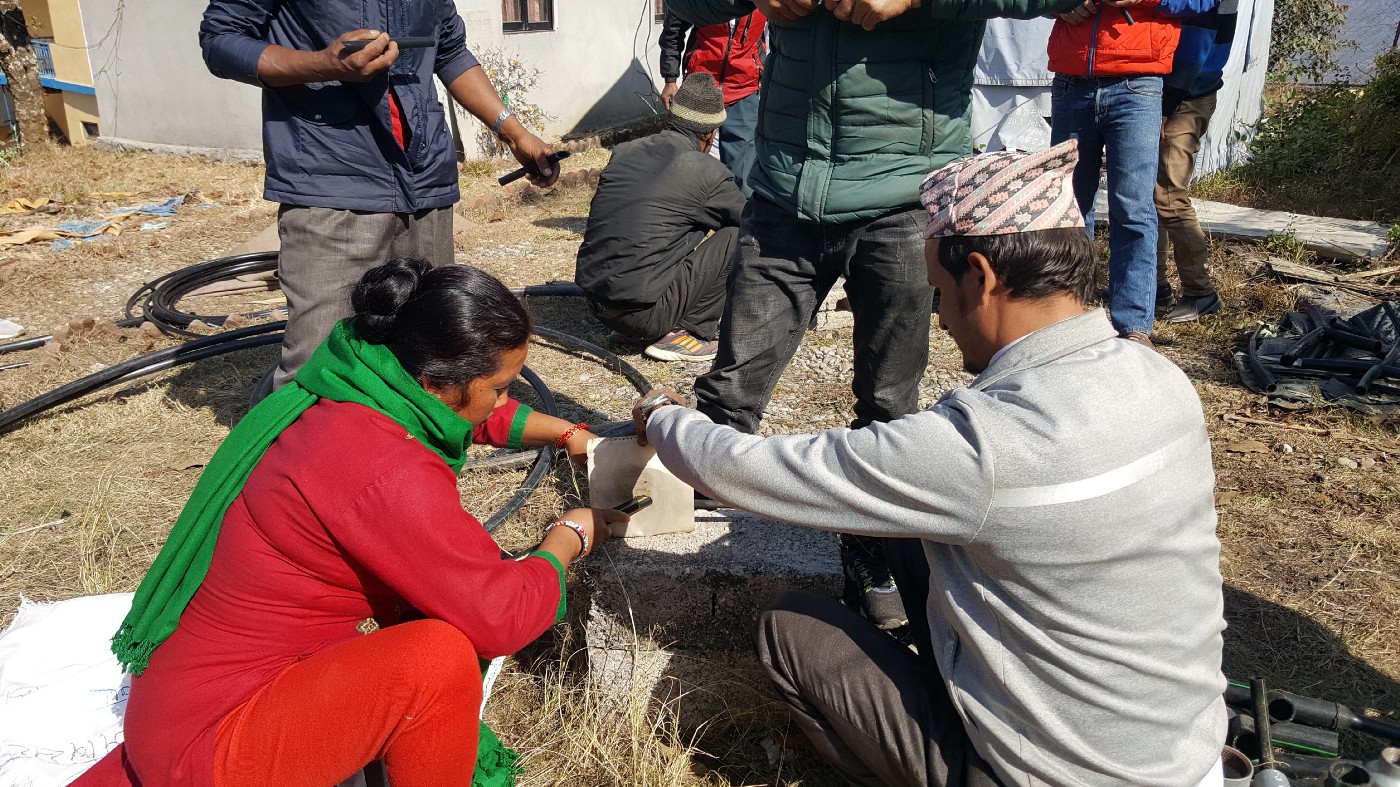
Photo credit: USAID/Nepal
Creating Healthier, More Resilient Communities
Safaa Paani’s water supply improvements also play a key role in safeguarding community health, since more than three-quarters of diarrheal diseases, including cholera, are linked to unsafe water supply, or poor sanitation and hygiene. To that end, the program focuses on implementing a range of water, sanitation, and hygiene (WASH) improvements to help keep communities healthy.
The results have been cause for celebration. Sathimuri, a small village in Sindhupalchowk District that is home to the indigenous Majhi community, is experiencing both health benefits and improved educational access. “We have seen a reduction in waterborne diseases such as jaundice and diarrhea in our community,” says Sita Majhi, secretary of the local water user committee. “Children fall sick less frequently as a result of waterborne diseases. Most of them are seen attending school regularly.”
To improve WASH at the village level, USAID works with a number of public and private-sector partners. Safaa Paani successfully advocated for the Government of Nepal to include toilets in its post-earthquake reconstruction plans. USAID also engaged communities directly with the help of trained community mobilizers, who went door to door to educate families about proper handwashing, toilet use and cleanliness, point-of-use water treatment, and other key WASH topics. Safaa Paani’s robust public outreach also manifested itself in organized rallies, handwashing demonstrations, and dozens of other events to educate communities about how to safeguard their health.
Beyond its general hygiene campaign, USAID tackled the issue of menstrual hygiene management. Even today, religious and social stigma against menstruating women continue to pose serious threats to women’s health in Nepal. In many cases, menstruating women are barred from religious or socio-cultural engagement, and in some regions, they are even still forced to quarantine in isolated “chhaupadi huts” during their monthly periods.
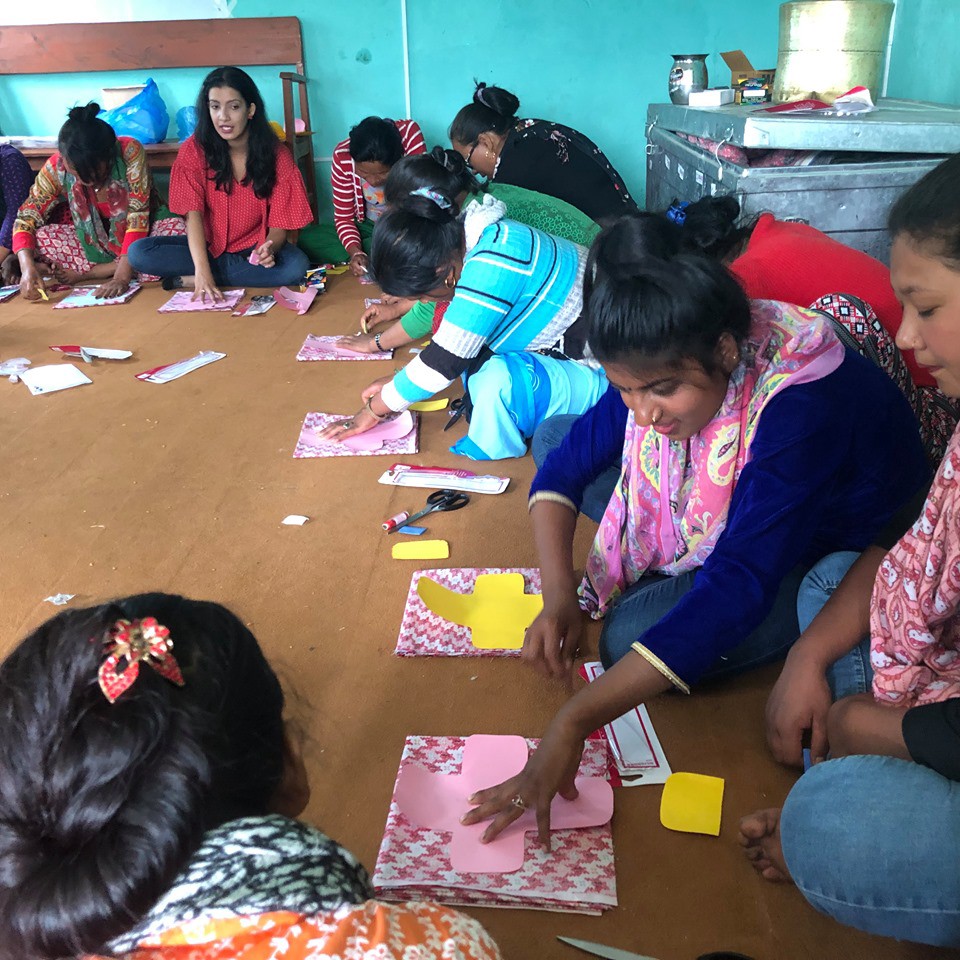
Photo credit: USAID/Nepal
To address such stigma, Safaa Paani trained school principals and staff from district education offices on menstrual hygiene and then provided classroom orientations to girls and boys with the aim of increasing their knowledge of menstruation and reducing stigma. “Now, girls can talk about menstruation and its management without hesitation,” said Nirmala Timalsena, a teacher at Ram Devi Secondary School in Sindhupalchowk District. Teachers also praise USAID’s approach of focusing on both boys and girls. Educators report that including boys has led to increased acceptance and understanding. As a result, boys have grown more sensitive and offer to help and provide moral support to female classmates rather than teasing them, as they did before.
Where the Road to Recovery Merges with the Path to Sustainability
Although USAID’s WASH interventions in rural Nepal have had a significant positive impact in many communities in the years since the earthquake, ensuring that water supply improvements remain viable over time is challenging. Nepal is prone to natural disasters, such as frequent landslides, that can strike with little to no warning and wreak havoc on infrastructure.
Sound construction, while important, is simply not enough — if the water systems are to truly stand the test of time, communities need to know how to maintain them and, if necessary, restore them if they incur significant damage.
USAID consulted extensively with local governments to select where the water systems would be built, recognizing that gaining local public officials’ trust early on in the process is an important determinant of whether or not infrastructure would remain viable in the future. Once the stakeholders weighed in on where to build each water system, USAID began working with community members to establish water user committees — associations of community members tasked with maintaining the local infrastructure. Safaa Paani involved each village’s committee in everything from pre-construction planning to post-construction maintenance, and provided training on topics such as financing the water systems, construction and maintenance, and water quality testing. “Strengthening governance is essential to ensuring infrastructure investments are sustainable,” explains USAID/Nepal’s Shrestha.
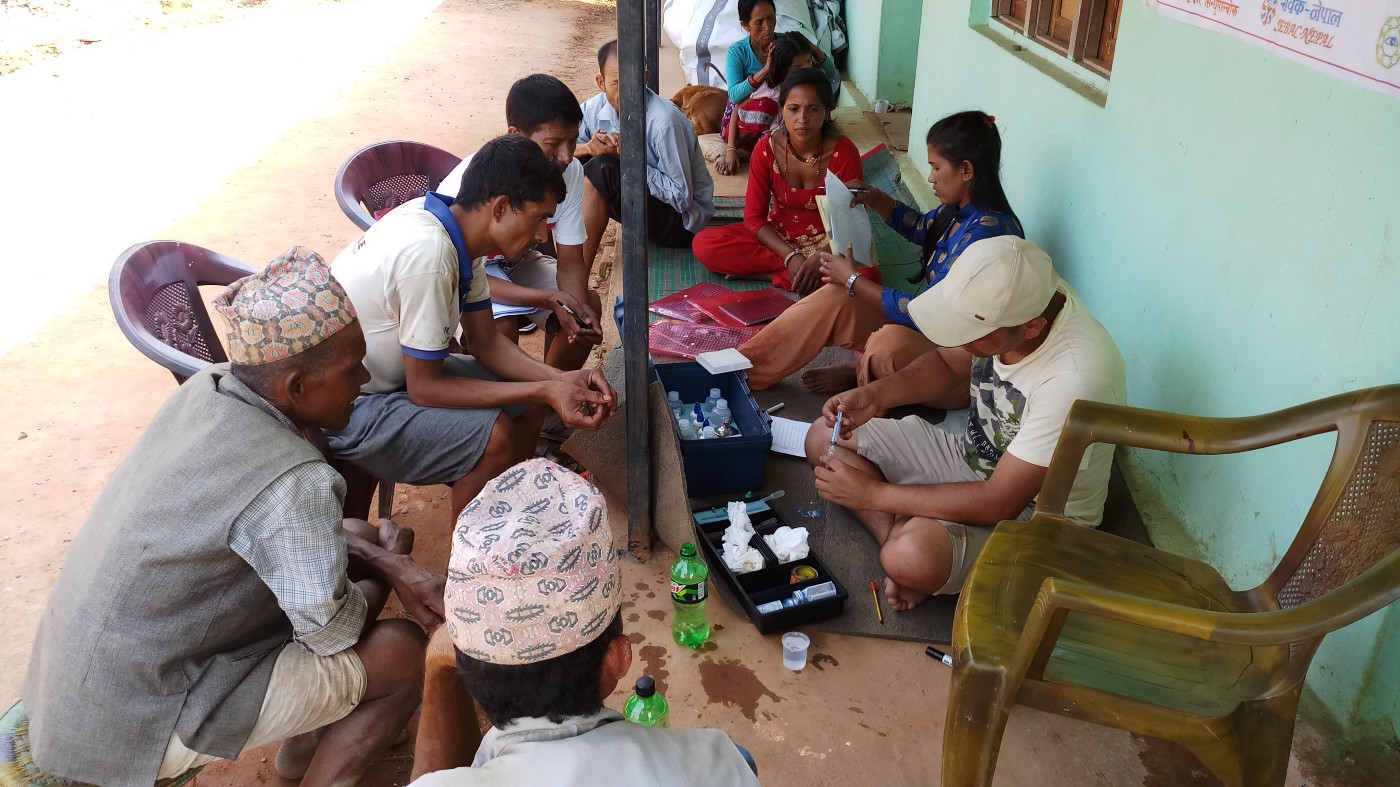
Photo credit: USAID/Nepal
Thanks to this training, water user committees in each of the villages are now better equipped to fix problems that arise, and maintain the water systems. The training also gave community members marketable skills — such as financial management and revenue collection — and contributed to empowering women and members of diverse ethnic groups and castes. In fact, about half of all water user committee members are women, and women or members of diverse ethnic groups and castes hold more than two-thirds of leadership positions on the committees.
Beyond good governance, financing is an essential component of water system sustainability, as it helps facilitate community buy-in. When communities contribute financially to development initiatives such as water supply infrastructure, residents become more invested in the maintenance of those systems. For that reason, Safaa Paani required local governments and communities to co-fund their water schemes.
With many residents unaccustomed to paying for water, fee collection proved challenging at first. To combat this reluctance, Safaa Paani empowered the water user committees to educate community members about the need for pooling resources to cover the costs of maintaining local water schemes. The committees successfully mobilized families to donate an up-front fee to fund operations and maintenance of the water infrastructure. As a result, the project exceeded its cost-share target by more than 150 percent, collecting over 50 million Nepalese rupees, or more than USD $425,000 — providing extra funds for communities to maintain their water systems over the long term.
Looking Back, Looking Forward
As a result of improved water security, many of the communities most impacted by the April 2015 earthquake are today looking toward the future with optimism rather than anxiety, thanks to the efforts of Safaa Paani. As the program prepares to come to an end later this year, it does so having made significant strides towards improving the quality of life in villages recovering from that devastating event.
While earthquakes, landslides, and other natural disasters may always lurk in Nepal’s future, hundreds of rural communities are now equipped with the WASH infrastructure, technical knowledge, and tools needed to remain resilient in the face of future threats. With this newfound self-reliance comes the confidence that no challenge will ever be too great for rural Nepalis to cope with and, eventually, overcome.


